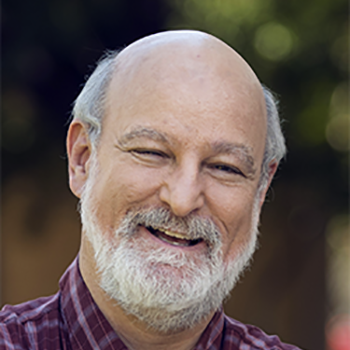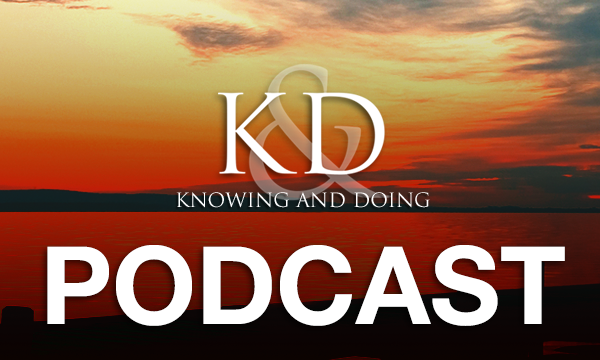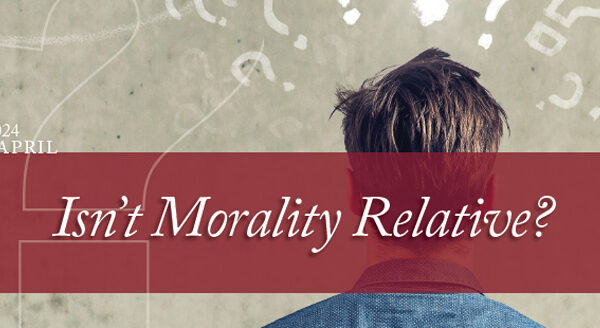Back to series




How the Gospels Work
VOLUME 4 NUMBER 3 ISSUE OF BROADCAST TALKS (PDF)
BROADCAST TALKS presents ideas to cultivate Christ-like thinking and living. Each issue features a transcription of a talk presented at an event of The C. S. Lewis Institute. The following is adapted from a talk given at a Conference on the Bible entitled “How the Gospels Work: The Inspiration of the Gospels” on September 22, 2018 at Immanuel Bible Church in Springfield, VA.
Figuring out how something works is pretty important. If you’ve ever tried to take a normal screw and use the Phillips screwdriver in it, you’ll understand the frustration of not understanding how something works. So I want to talk in particular about the Synoptic Gospels (Matthew, Mark, and Luke) and John and their relationship to one another. Anyone who has spent any length of time in the Gospels will recognize that there is something going on with Matthew, Mark, and Luke that’s not going on with John. We in the church tend to be drawn to the Gospel of John, because John does a lot of heavy lifting for us. But as a result we tend to be perplexed about what’s going on in Matthew, Mark, and Luke. Why aren’t they more like John? I want to explain what I think is going on, why the Gospels are the way they are. On the back side of that is going to come this result: We’re going to be better equipped to understand how to tell the story of the Gospels to people who really don’t know who Jesus is.
 So let me start this way. No one comes to Jesus like this: They’re born, the doctor gives them the swat of life, and they go “wah, wah, wah! Jesus, the second person of the ontological Trinity, wah, wah, wah!” No one comes to Jesus like that. Everyone who comes to Jesus comes from what I want to describe as “from the earth up.”
So let me start this way. No one comes to Jesus like this: They’re born, the doctor gives them the swat of life, and they go “wah, wah, wah! Jesus, the second person of the ontological Trinity, wah, wah, wah!” No one comes to Jesus like that. Everyone who comes to Jesus comes from what I want to describe as “from the earth up.”
Someone has got to sit down and describe why Jesus is unique among all individuals who have ever walked the earth; He is an individual like no other — this combination of deity incarnated in a human being. Since that is such a foreign concept to us, here’s what we do. We gravitate toward the Gospel of John because John puts the whole story together for us from heaven down. From the very first verse, you know who John thinks Jesus is: “In the beginning was the Word, and the Word was with God, and the Word was God.” So that’s how John works. John is playing his heaven-down card the whole way, and we as believers gravitate toward that. We love that story told that way because it does all our heavy lifting for us.
But what I submit to you is that the Synoptic Gospels do it the other way around. They tell the story of Jesus from the earth up. They start with categories that we are used to in describing people, and we watch it slowly dawn on people who Jesus is. And that’s exactly how everyone experiences Jesus; it’s from that perspective. So my thesis is a simple one: that it is no mistake that in the canon God has three gospels that tell the story of Jesus from the earth up, and one — just to be sure we get it — from heaven down. That’s how the Gospels work. But if that’s so, then we need to think about how the Gospels tell that story from the earth up. My secondary premise is this: the church has forgotten how to tell the story of Jesus from the earth up. And yet that’s how most people have to experience Him. So we need to learn how to tell the story of Jesus from the earth up.
So I want to take you through some stories about Jesus that build it from the ground up. But first, for a second, I want you to think about the start of Matthew, Mark, and Luke, and I’m going to go in a noncanonical order.
The story of Mark starts with John the Baptist. We see John the Baptist do his thing and preach in preparation for the Lord, and then we get the ministry of Jesus. We don’t get anything about the birth of Jesus in Mark. Matthew and Luke do start with the birth of Jesus. Matthew tells the story of the birth of Jesus primarily from the perspective of Joseph and what he went through as Jesus was born. Luke tells the story of Jesus primarily from the perspective of Mary and what she saw as the events of Jesus’s birth were experienced; Luke also gives us a little preamble with John the Baptist and his birth to relate the two to each other. All of those are normal starting places in many ways. Every person’s life begins with a birth. And the story of a person’s ministry vocation, if that’s where they end up, begins with what the beginning of their teaching and preaching was like. These are all familiar starting places in terms of how to tell the story of what someone’s ministry about God was all about. So what I want to do is take two events, I hope with a bit of fun, and walk you through two earth-up events, one toward the beginning of Jesus’s ministry and one toward the end. Then we’ll put that together and I’ll suggest how to tell the story of Jesus from the earth up.
The first event I select is in Mark 2, Jesus’s healing of the paralytic. It is the first of five consecutive controversies in both Mark and later in Luke. They all come in a row, one right after another. Jesus’s healing of the paralytic, Jesus’s association with tax collectors and sinners, Jesus’s practices that don’t align with the Pharisees and John the Baptist, His prayer and fasting habits, and then two Sabbath controversies. They literally come one right after the other. Bang! Bang! Bang! Bang! Bang! After you’ve gone through these five events, you know what irritated Jesus’s religious listeners about what He was doing, and there’s a good reason for that. So I want to replay for you and have you visualize with me and listen to the healing of the paralytic.
Jesus is teaching in a room. It’s packed. Four guys are bringing a paralytic for Him to be healed. The first sound you hear is “umpah, umpah, umpah, umpah.” The next thing you see are flakes coming down from above. The next thing you hear is this: beep beep beep beep beep plunk! And there he is, the paralytic in front of Jesus, having dropped in on this message that Jesus was giving. I guarantee you everything stopped. Jesus says to the paralytic, “Your sins are forgiven.” Now think about this for a second; this is not in the text, but think about it. You’re the paralytic sitting there; you’ve dropped in to see Jesus, and the first thing He says to you is, “Your sins are forgiven.” What are you thinking? “That’s not why I crashed this party.” Jesus says, “Your sins are forgiven,” and the paralytic is sitting there going, “Okay, well that was quite an effort.” So you’re at an impasse. Meanwhile there’s thinking going on in the audience — by the theologians, the scribes and Pharisees, and folks who were present. They’re thinking to themselves, “Who can forgive sins but God alone?”
Let me tell you a little secret about the Gospels. Whenever anyone thinks privately to themselves in front of Jesus, it’s bad for the person doing the thinking. It’s bad news. Because what follows inevitably is some type of correction or rebuke or some type of probing in terms of what’s going on. So that’s the scene.
And so Jesus turns around; He knows what they’re thinking. If we pick it up in the text, what we’ll get in verse 6 is this: “Now some of the scribes were sitting there questioning in their hearts, ‘Why does this man speak like that? He is blaspheming! Who can forgive sins but God alone?’ And immediately Jesus, perceiving in His spirit that they thus questioned within themselves…” (The text couldn’t be clearer; nothing was being said. He was reading their thinking. That’s already impressive.) “And immediately Jesus, perceiving in his spirit that they thus questioned within themselves, said to them, ‘Why do you question these things in your hearts? Which is easier to say to the paralytic, “Your sins are forgiven,” or to say, “Rise, take up your bed and walk”?’” [vv. 6–9 ESV].
 This is a really good question, if you think about it. But it’s also a bit tricky; on the one hand, it’s easier to say your sins are forgiven than to say to a paralytic, get up and walk. Why is that? It’s because if I say to you, your sins are forgiven, how are you going to see it? What does forgiveness of sins look like? Have you seen forgiveness of sins? Have I seen forgiveness of sins? You can’t see forgiveness of sins. But if I say to a paralytic, get up and walk, it’s show time. Something’s got to happen.
This is a really good question, if you think about it. But it’s also a bit tricky; on the one hand, it’s easier to say your sins are forgiven than to say to a paralytic, get up and walk. Why is that? It’s because if I say to you, your sins are forgiven, how are you going to see it? What does forgiveness of sins look like? Have you seen forgiveness of sins? Have I seen forgiveness of sins? You can’t see forgiveness of sins. But if I say to a paralytic, get up and walk, it’s show time. Something’s got to happen.
So Jesus has posed this question. But ultimately saying your sins are forgiven is the harder thing to do, because you’ve got to have the authority to forgive sins. So Jesus in verse 10 says, “‘…But that you may know that the Son of Man has authority on earth to forgive sins,’ — he said to the paralytic — ‘I say to you, rise, pick up your bed, and go home.’” When that paralytic gets up and starts to walk, his walk talks. And what his walk says is, “The Son of Man has authority on earth to forgive sins.” What Jesus has done has linked something you cannot see to something you certainly can see. And what Jesus is doing is — and this is important — He is showing His authority. He is doing stuff that points to who He is. What does Jesus do in His ministry in this section of the Gospel that’s going from the earth up? He does God stuff. And as He repeatedly does God stuff in different areas, it’s supposed to dawn on the people seeing Him: He’s doing God stuff. As they watch Him do so in place after place and space after space, it’s supposed to dawn on them who Jesus is and that’s exactly what we see in the Synoptic Gospels, with this being one of the earliest incidents of it.
Let me give you a list of others. The first is the healing of the paralytic, which shows Jesus’s authority over the forgiveness of sins, something over which only God is supposed to have authority. Another part of this sequence is the healings on the Sabbath. First, it’s the plucking of the grain on the Sabbath. The disciples are plucking grain, and someone comes up to Jesus and says, “Your disciples are doing what’s not permitted on the Sabbath.” Jesus replies, at least in Mark it’s a short reply, “Have you read about what David did with the showbread? When he took the showbread, which is only, according to the Law, for the priests to eat, and he ate it?” Then what Jesus doesn’t say but what He wants them to think about… “and no lightning bolts came down from heaven; those guys survived that. Have you thought about that?” But that isn’t where Jesus stops. He goes on to say, “The Son of Man is lord of the Sabbath.” Now think about the Sabbath. The Sabbath is the Lord’s Day; He’s the one who commanded it. It acts as a reflection of His day of rest in creation; it’s commemorated in the Ten Commandments. It’s a big deal. It’s like, “Who’s in charge of the calendar here?” The Son of Man is lord of the Sabbath. And the healing shows what He’s claiming. That’s why healings, by the way, are power points. They’re audiovisuals about Jesus’s power. And they point to His authority. Look at the next scene in the controversies. He heals someone with a withered hand. I thought God didn’t help sinners. I thought God wouldn’t help a sinner who violated the Sabbath. If that’s the case, how did that guy’s hand get healed? And what kind of a person is it? What kind of human being is it who’s in charge of the Lord’s Day?
The title “Son of Man” is interesting. It’s a human being. Son of Man means “son of a human.” It’s a human being, but this human being, according to Daniel 7, rides the clouds. That’s God stuff. Only God rides the clouds in the Old Testament. So what’s the Son of Man doing riding the clouds and receiving — get this — authority, judgment authority from the Ancient of Days?
Or think about when Jesus walks on the water. Who’s in charge of the creation? That’s God stuff. So what’s happening is… Jesus is doing this little God-stuff thing and that little God-stuff thing and this little God-stuff thing. Any one of them, you might see someone in the Old Testament doing. But who does the whole enchilada? Who does the whole thing? Who does it in a variety of areas? Let me give you another one to think about.
The Last Supper: The Last Supper is a Passover meal. It is instituted in the Old Testament, what we call the Old Testament, the Hebrew Scriptures. In Jesus’s day, that was all there was. The Passover meal is instituted there; there’s a very specific sequence of things that’s supposed to happen. Jesus comes along to this mandated part of what has been the depiction of Israel’s salvation from the very beginning when it happened. And He changes all its meaning. He redefines and reconfigures all the categories. Who has the right to do that to something that God has commanded? That’s a good question. So what you see Jesus doing in the Synoptic Gospels, here and there and pretty much everywhere… He starts doing a whole series of things that represent God stuff, stuff that He has the authority to do that otherwise would not be done by a human being, at least not in the scope with which He’s doing it. He’s performing miracles to show the claims that He’s making that you can’t see by what you can see. And the only way those miracles happened is if God is working with Jesus. And if God is working with Jesus, what kind of credibility does that give to what Jesus is saying about Himself, and what Jesus is saying about the program that He’s bringing? That’s how you’re supposed to read the Synoptic Gospels.
There’s another event that is very particular in this regard, and I see it as one of the most significant events in the New Testament. It is the examination of Jesus before the Jewish leadership. He’s sitting in front of the Sanhedrin, the Council, and they’re all gathered together trying to figure out what to do with Jesus. They have an all night meeting, and they’re having trouble getting a charge that they can take to Pilate. It’s a gathering of evidence, and they’re having trouble gathering their evidence.
 In Mark 14:61, the high priest asked Jesus, “Are you the Christ, the Son of the Blessed?” [ESV] The Son of the Blessed is a phrase of respect for God. Pious Jewish people don’t say God, they say something that kind of talks around it. So that “Son of the Blessed” puts this in a very pious context. They’re being respectful of God as this question is being asked. Of course in the back of their minds they think Jesus is not respectful of God. So that’s one of the reasons they do it. Then it says, “And Jesus said, ‘I am,” (I think that’s a yes, okay?) “‘and you will see the Son of Man seated at the right hand of Power, and coming with the clouds of heaven.’”
In Mark 14:61, the high priest asked Jesus, “Are you the Christ, the Son of the Blessed?” [ESV] The Son of the Blessed is a phrase of respect for God. Pious Jewish people don’t say God, they say something that kind of talks around it. So that “Son of the Blessed” puts this in a very pious context. They’re being respectful of God as this question is being asked. Of course in the back of their minds they think Jesus is not respectful of God. So that’s one of the reasons they do it. Then it says, “And Jesus said, ‘I am,” (I think that’s a yes, okay?) “‘and you will see the Son of Man seated at the right hand of Power, and coming with the clouds of heaven.’”
Now I want you to write this down because it is important. The question was, “Are you the Christ, the Son of the Blessed?” I don’t think the high priest, Caiaphas, is asking Him, “Are you the second person of the ontological Trinity?” Caiaphas doesn’t believe in the Trinity. He’s asking, “Are you the King, the Son of God?” In the Davidic covenant, God says to the King, “I will be to him a father and he will be to me a son” [2 Sam. 7:14 ESV]. And so he’s asking, “Are you the Messiah?” Jesus’s answer gives Caiaphas more than he’s bargaining for. Jesus’s answer is, “I am, and you will see the Son of Man seated at the right hand of Power.”
Think about this. He gets to sit with God in heaven. That is a God stuff thing, to be able to sit with God in heaven. Why is it that all our confessions speak about Jesus being seated at the right hand of God? Because that says something about His status. And so, “You will see the Son of Man seated at the right hand of Power.” Notice Jesus also responds with respect toward God. He doesn’t say it’s the right hand of God; He says at the right of power, returning the respect for God back, and “coming with the clouds of heaven.” Only God does that. So we’ve got someone seated with God in heaven and riding the clouds, something only God does. Caiaphas asked Him, “Are you the Messiah?” and Jesus said, “Well, yes, but not just that.” Jesus said, in effect: You can do whatever you want to Me, but one day God’s going to vindicate Me.”
The high priest gets what Jesus is saying. He just doesn’t believe Jesus is who He claims to be, so he tears his clothes. The theologians in the Gospels often have the theology right but they misidentify Jesus. “No one can forgive sins but God alone.” You’re right. “No one sits with God in heaven; that means you’re claiming divine authority.” That’s right. And if Jesus is not who He claims to be, their tearing their clothes is right. But if Jesus is who He claims to be, there’s an issue they need to face. That’s why the resurrection of Jesus is important. The resurrection is a vote in a political, theological dispute between Jesus and the Jewish leadership. And each position is represented by a single word. Jesus represents the exaltation party. God is going to exalt Me and sit Me at the right hand of God and show you who I am. The Pharisees and the Sanhedrin and the Sadducees represent the blasphemy party: No one sits with God in heaven. And the resurrection comes along and says: Here is God’s vote. When that tomb goes empty and God raises Jesus from the dead, He has already told the Jewish leadership what it is that God is doing.
In other words, the resurrection is God’s answer to who Jesus is. You know, when we preach the resurrection on Easter, we preach it this way. We say, “He’s alive, so we’ll be alive one day.” Now that’s absolutely and totally true, but we’re missing half the story. The other half of the Easter story is: Jesus is who He claims to be, and you better deal with Him. Because He’s sitting at the right hand of God, and He sits at the right hand of God as the judge of the living and the dead — and not only the judge of the living and the dead, He offers you everything you need to be fully human. There’s forgiveness of sins.
The good news of the gospel isn’t just that we avoid hell, or that we have our sins forgiven. It isn’t the song, “Heaven is a wonderful place… I want to see my Savior’s face.”
 We’re talking about not avoiding a place and gaining a location. We’re talking about gaining Someone, the living God. In the with the capability –– a power, is the way Romans 1:16 describes it –– that we did not possess before, putting us back in touch with the image of God within us so that we can image God in a way we were originally created to image God. And that is the gospel. That’s what Jesus’s exaltation points to. If He is not who He claims to be, the One seated at the right hand with authority over these things and the One who distributes these gifts, then, as Paul said, “We’re the most pitied of all people.” That, ladies and gentlemen, is how the Gospels are designed to work, particularly the Synoptic Gospels. So we need to learn how to tell this story from the earth up. When we tell the Jesus story from heaven down, we are asking the listeners to leap over tall buildings in a single, theological bound. And most people are not Superman. But if we can learn how to tell the story of the Gospels not just from heaven down but from earth up, and reflect on what it is that Jesus is doing in multiple spaces and multiple places and in multiple ways, each having a little different angle on things (I’ve just given you a snapshot of three or four of them), you will be able to put a Phillips screwdriver in a Phillips screw and secure what it is you’re working on.
We’re talking about not avoiding a place and gaining a location. We’re talking about gaining Someone, the living God. In the with the capability –– a power, is the way Romans 1:16 describes it –– that we did not possess before, putting us back in touch with the image of God within us so that we can image God in a way we were originally created to image God. And that is the gospel. That’s what Jesus’s exaltation points to. If He is not who He claims to be, the One seated at the right hand with authority over these things and the One who distributes these gifts, then, as Paul said, “We’re the most pitied of all people.” That, ladies and gentlemen, is how the Gospels are designed to work, particularly the Synoptic Gospels. So we need to learn how to tell this story from the earth up. When we tell the Jesus story from heaven down, we are asking the listeners to leap over tall buildings in a single, theological bound. And most people are not Superman. But if we can learn how to tell the story of the Gospels not just from heaven down but from earth up, and reflect on what it is that Jesus is doing in multiple spaces and multiple places and in multiple ways, each having a little different angle on things (I’ve just given you a snapshot of three or four of them), you will be able to put a Phillips screwdriver in a Phillips screw and secure what it is you’re working on.
[Videos of the complete version of this talk and the other sessions from the “Building Your Life on Truth: The Inspiration, Reliability and Authority of the Bible” conference featuring Darrell Bock, with Scott Redd and Art Lindsley are available on the C.S. Lewis Institute website Here]


Darrell Bock
New Testament Scholar Darrell Bock is Executive Director of Cultural Engagement and Senior Research Professor of New Testament Studies at Dallas Theological Seminary in Dallas, Texas. He is a graduate of the University of Texas (B.A.), Dallas Theological Seminary (Th.M.), and the University of Aberdeen (Ph.D.). Professor Bock is the author of over 40 books, including well-regarded commentaries on Luke and Acts and studies of the historical Jesus. He was president of the Evangelical Theological Society (ETS) for 2000–2001, is a consulting editor for Christianity Today, and serves on the boards of Wheaton College and Chosen People Ministries.
 COPYRIGHT: This publication is published by C.S. Lewis Institute; 8001 Braddock Road, Suite 301; Springfield, VA 22151. Portions of the publication may be reproduced for noncommercial, local church or ministry use without prior permission. Electronic copies of the PDF files may be duplicated and transmitted via e-mail for personal and church use. Articles may not be modified without prior written permission of the Institute. For questions, contact the Institute: 703.914.5602 or email us.
COPYRIGHT: This publication is published by C.S. Lewis Institute; 8001 Braddock Road, Suite 301; Springfield, VA 22151. Portions of the publication may be reproduced for noncommercial, local church or ministry use without prior permission. Electronic copies of the PDF files may be duplicated and transmitted via e-mail for personal and church use. Articles may not be modified without prior written permission of the Institute. For questions, contact the Institute: 703.914.5602 or email us.
-
Recent Podcasts
A Welcome Change in Apologetics
by Randy Newman, Aimee Riegert on April 19, 2024We’re burdened for our friends who don’t know...Read More
-
Questions That Matter Podcast – Samuel James and Digital Liturgies
by Samuel James, Randy Newman on April 19, 2024
-
The Side B Stories – Dr. James Tour’s story
by Jana Harmon, James Tour on April 12, 2024
-
Recent Publications
Isn’t Morality Relative?
by Christopher L. Reese on April 1, 2024It is widely accepted in the Western world...Read More
-
Do Muslims and Christians Worship the Same God?
by Andy Bannister on March 1, 2024
-
Artificial Intelligence and Its Impacts on Humanity
by John Lennox on February 13, 2024
0
All Booked
0.00
All Booked
0.00
All Booked
20599
GLOBAL EVENT: 2024 Study Tour of C.S. Lewis’s Belfast & Oxford
https://www.cslewisinstitute.org/?event=global-event-2023-study-tour-of-c-s-lewis-belfast-oxford-2&event_date=2024-06-22®=1
https://www.paypal.com/cgi-bin/webscr
2024-06-22

Next coming event
Days
Hours
Minutes
Seconds
GLOBAL EVENT: 2024 Study Tour of C.S. Lewis’s Belfast & Oxford
On June 22, 2024 at 12:00 pmat Belfast, Northern Ireland & Oxford, EnglandCategories
Tags
Speakers

Darrell Bock
New Testament Scholar
Team Members

Darrell Bock
New Testament ScholarDarrell Bock is Executive Director of Cultural Engagement and Senior Research Professor of New Testament Studies at Dallas Theological Seminary in Dallas, Texas. He is a graduate of the University of Texas (B.A.), Dallas Theological Seminary (Th.M.), and the University of Aberdeen (Ph.D.). Professor Bock is the author of over 40 books, including well-regarded commentaries on Luke and Acts and studies of the historical Jesus. He was president of the Evangelical Theological Society (ETS) for 2000–2001, is a consulting editor for Christianity Today, and serves on the boards of Wheaton College and Chosen People Ministries.




